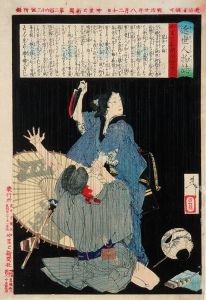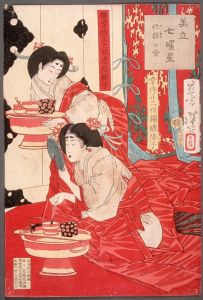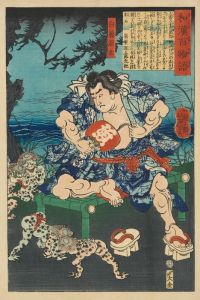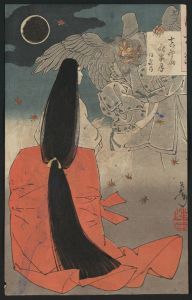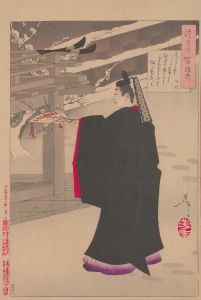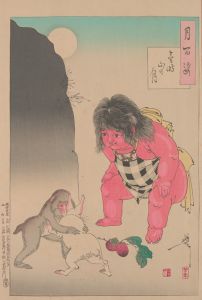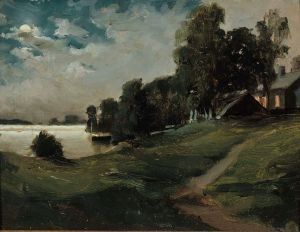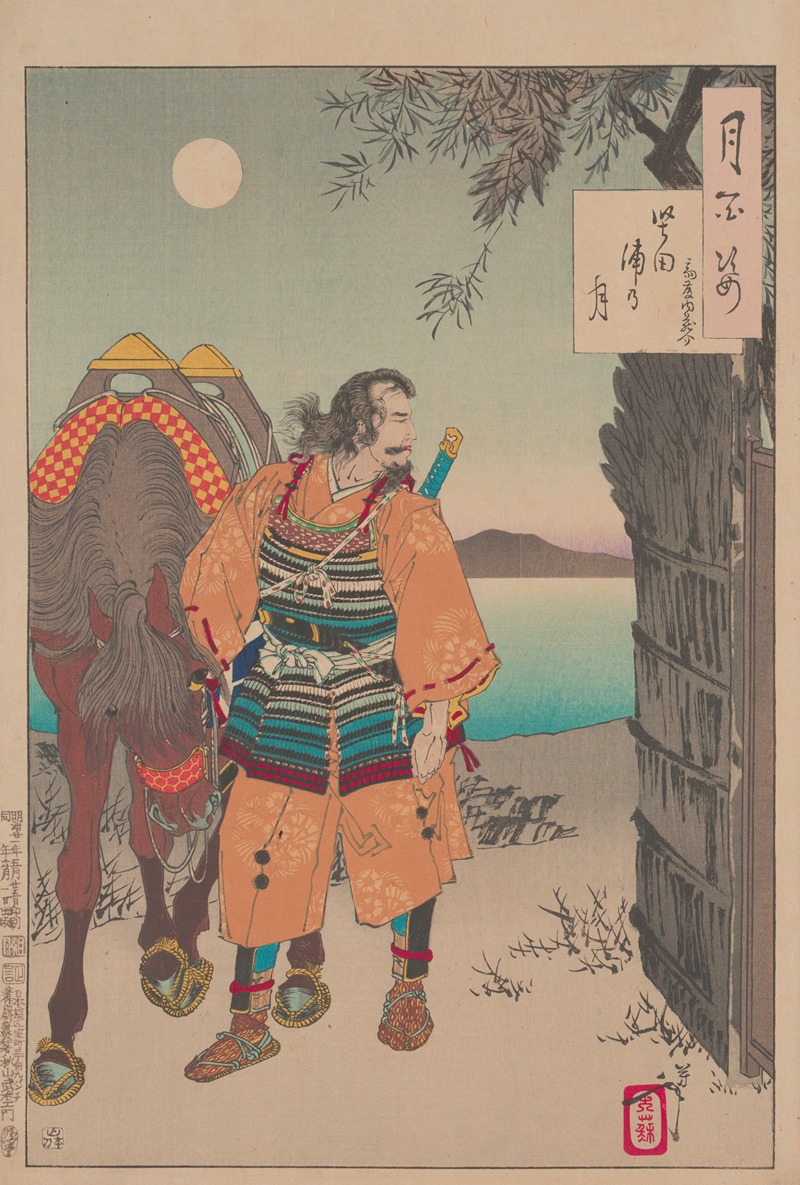
Katada Bay moon
A hand-painted replica of Tsukioka Yoshitoshi’s masterpiece Katada Bay moon, meticulously crafted by professional artists to capture the true essence of the original. Each piece is created with museum-quality canvas and rare mineral pigments, carefully painted by experienced artists with delicate brushstrokes and rich, layered colors to perfectly recreate the texture of the original artwork. Unlike machine-printed reproductions, this hand-painted version brings the painting to life, infused with the artist’s emotions and skill in every stroke. Whether for personal collection or home decoration, it instantly elevates the artistic atmosphere of any space.
"Katada Bay Moon" is a woodblock print created by the renowned Japanese artist Tsukioka Yoshitoshi. This artwork is part of Yoshitoshi's celebrated series "One Hundred Aspects of the Moon" (Tsuki hyakushi), which was published between 1885 and 1892. The series consists of 100 prints, each depicting various scenes and stories inspired by the moon, drawing from Japanese and Chinese history, literature, folklore, and mythology.
Tsukioka Yoshitoshi (1839–1892) was a prominent figure in the ukiyo-e tradition, a genre of Japanese art that flourished from the 17th through the 19th centuries. Yoshitoshi is often regarded as the last great master of this tradition, known for his innovative compositions and his ability to convey emotion and drama. His work came at a time when Japan was undergoing significant changes during the Meiji Restoration, and he managed to capture both traditional and modern elements in his art.
"Katada Bay Moon" specifically depicts a serene and evocative scene set at Katada Bay, a location near Lake Biwa in Japan. The print captures the tranquil beauty of the moonlit bay, showcasing Yoshitoshi's skill in using light and shadow to create a mood of calm and reflection. The moon, a central theme in the series, is often associated with various symbolic meanings in Japanese culture, including beauty, impermanence, and the passage of time.
Yoshitoshi's "One Hundred Aspects of the Moon" series is notable for its diversity in subject matter and style. Each print in the series tells a unique story or presents a distinct scene, often accompanied by a short descriptive text or poem that enhances the viewer's understanding of the image. The series reflects Yoshitoshi's deep appreciation for traditional Japanese culture and his ability to adapt these themes to the changing tastes of the Meiji period audience.
The "Katada Bay Moon" print exemplifies Yoshitoshi's mastery of the woodblock printing technique, which involves carving an image into a wooden block, inking the block, and then pressing it onto paper. This method allows for the production of multiple copies of a single image, making ukiyo-e prints accessible to a wide audience. Yoshitoshi's prints are characterized by their intricate details, vibrant colors, and dynamic compositions, all of which are evident in "Katada Bay Moon."
Yoshitoshi's work, including "Katada Bay Moon," has been influential in both Japan and the West. His prints have been collected and admired for their artistic quality and historical significance, and they continue to be studied and appreciated by art historians and enthusiasts around the world. The "One Hundred Aspects of the Moon" series, in particular, is considered one of his masterpieces, showcasing his ability to blend traditional themes with innovative artistic techniques.
In summary, "Katada Bay Moon" by Tsukioka Yoshitoshi is a significant work within the "One Hundred Aspects of the Moon" series, reflecting the artist's skill and creativity in capturing the beauty and symbolism of the moonlit landscape. Through this print, Yoshitoshi invites viewers to contemplate the serene and timeless nature of the scene, offering a glimpse into the rich cultural heritage of Japan.






